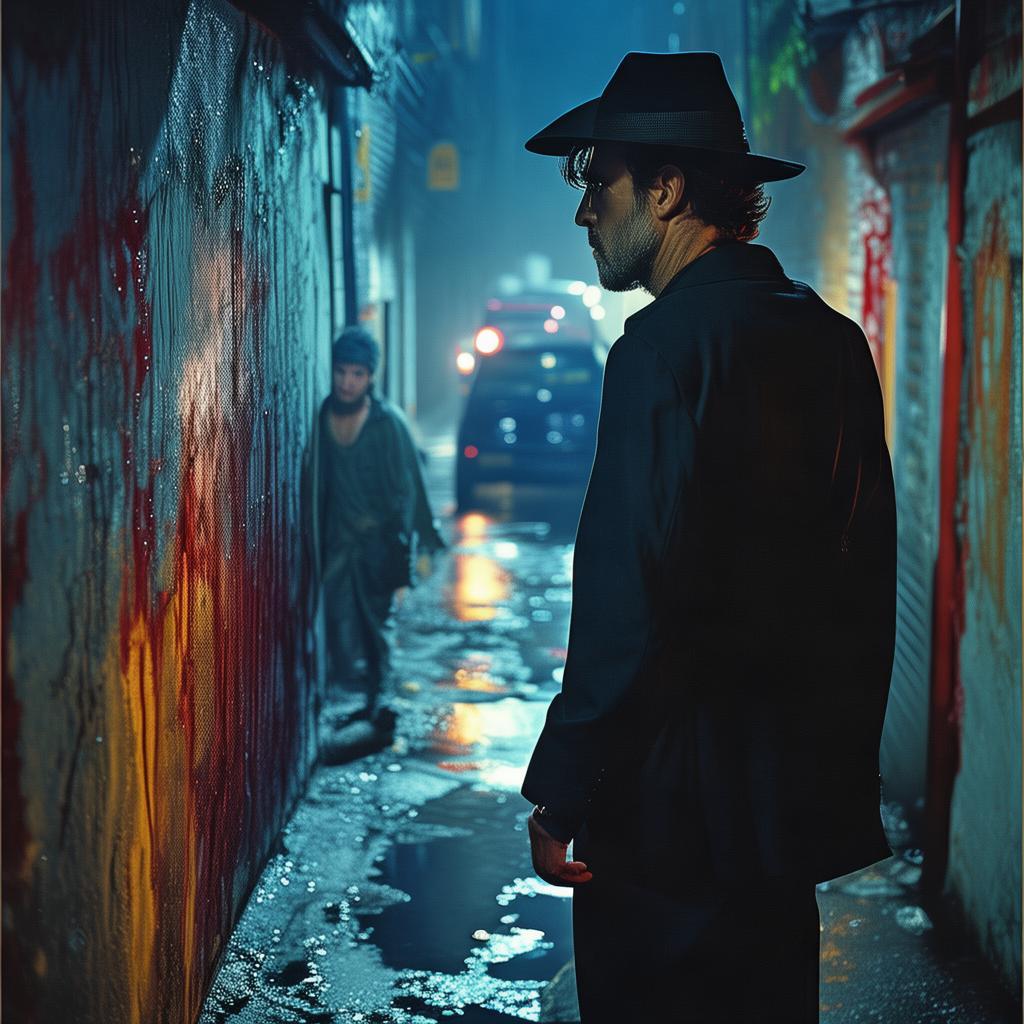Whispers of the Zen Garden
In the heart of the ancient temple, surrounded by the tranquil sounds of flowing water and rustling leaves, the Zen garden stood as a sanctuary for contemplation and enlightenment. Its beauty was unmatched, a tapestry of meticulously arranged rocks, trees, and shrubs that whispered of ancient wisdom and profound truths. But in the courtyard where the garden lay, an unexpected tragedy was about to unfold, and with it, a riddle so deadly that it would shake the very core of the temple's serene facade.
The victim was a renowned scholar, a man of great intellect and deep respect among the monks. His body was found sprawled across the stone floor of the courtyard, his eyes wide with shock and confusion. His fingers were still clutching a single, ancient scroll. The temple's monks were in disarray, for no one could fathom why such a revered figure would meet such a tragic end.
As the news of the scholar's death spread, whispers began to fill the corridors of the temple. Among these whispers was the riddle, etched into the stone of the courtyard where the body was found. It read:
"Beneath the cherry tree,
A shadow waits for you.
Unseen, it draws near,
In the garden, death will appear."
The riddle was cryptic, and its meaning seemed to shift with each interpretation. The monks, in their attempts to understand the riddle's intent, began to investigate the scholar's last moments. They delved into his life, uncovering old friendships, deep-seated rivalries, and hidden secrets. Each clue they uncovered seemed to lead them further into a labyrinth of intrigue and deceit.
Amidst the chaos, a young monk named Kaito stepped forward. He was a novice with a keen mind and a passion for unraveling the mysteries that lay hidden within the temple's walls. Kaito had been close to the scholar, and his death weighed heavily on his heart. He decided to take on the challenge of solving the riddle and bring justice to his mentor's untimely demise.
As Kaito began his investigation, he discovered that the riddle was no mere cryptogram. It was a warning, a prelude to a series of tests that would determine who among them held the key to the scholar's murder. The monks, now more than ever, were at each other's throats, desperate to prove their innocence and avoid becoming the next victim of the lethal riddle.
One by one, the monks faced trials designed to test their innermost thoughts and motivations. A monk was confronted with his deepest fear, a monk was forced to confront his past sins, and another was put to the ultimate test of loyalty. Each challenge seemed to draw the monks closer to the truth, but at the cost of their sanity and their lives.

As Kaito worked tirelessly to solve the riddle, he realized that the garden itself was a living entity, watching over them, guiding them to the truth. The cherry tree, with its blossoms in full bloom, became a symbol of hope and a reminder of the fleeting nature of life. The shadow that awaited them was the unknown, the dark forces that lurked beneath the surface of the temple's serene beauty.
The climax of the story came when Kaito deciphered the final piece of the riddle. He discovered that the true killer was a monk who had been hiding his hatred and jealousy for years. The monk had orchestrated the scholar's death in a bid to seize control of the temple's teachings and wealth. Kaito, with the help of the other monks, managed to corner the killer and confront him with the truth.
In a dramatic showdown, the killer tried to use the riddle's cryptic nature as his defense. But Kaito, now an expert in deciphering the temple's enigmatic riddles, exposed the killer's lies. With the truth laid bare, the monk's treachery was no longer a secret, and the monks of the temple could finally find peace.
The ending of the story was bittersweet. The temple's serene beauty had been marred by tragedy, but it also emerged stronger, united in its commitment to wisdom and truth. Kaito, now a respected member of the temple, looked upon the Zen garden with a newfound appreciation for its hidden depths and the lessons it taught. The garden, with its whispers of ancient wisdom, had once again proven itself to be a guardian of secrets and a crucible for character.
✨ Original Statement ✨
All articles published on this website (including but not limited to text, images, videos, and other content) are original or authorized for reposting and are protected by relevant laws. Without the explicit written permission of this website, no individual or organization may copy, modify, repost, or use the content for commercial purposes.
If you need to quote or cooperate, please contact this site for authorization. We reserve the right to pursue legal responsibility for any unauthorized use.
Hereby declared.









